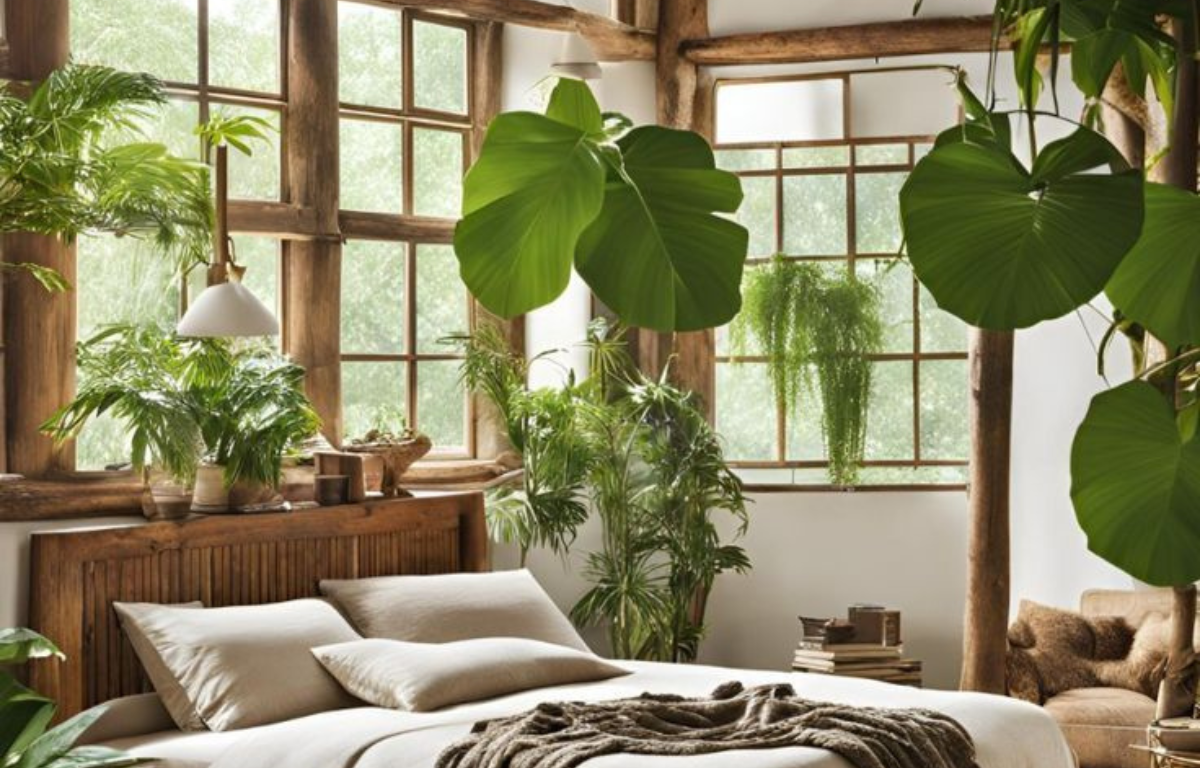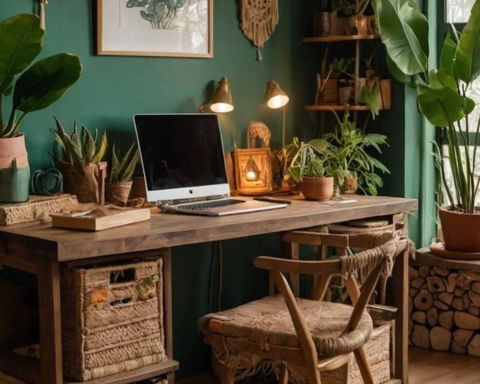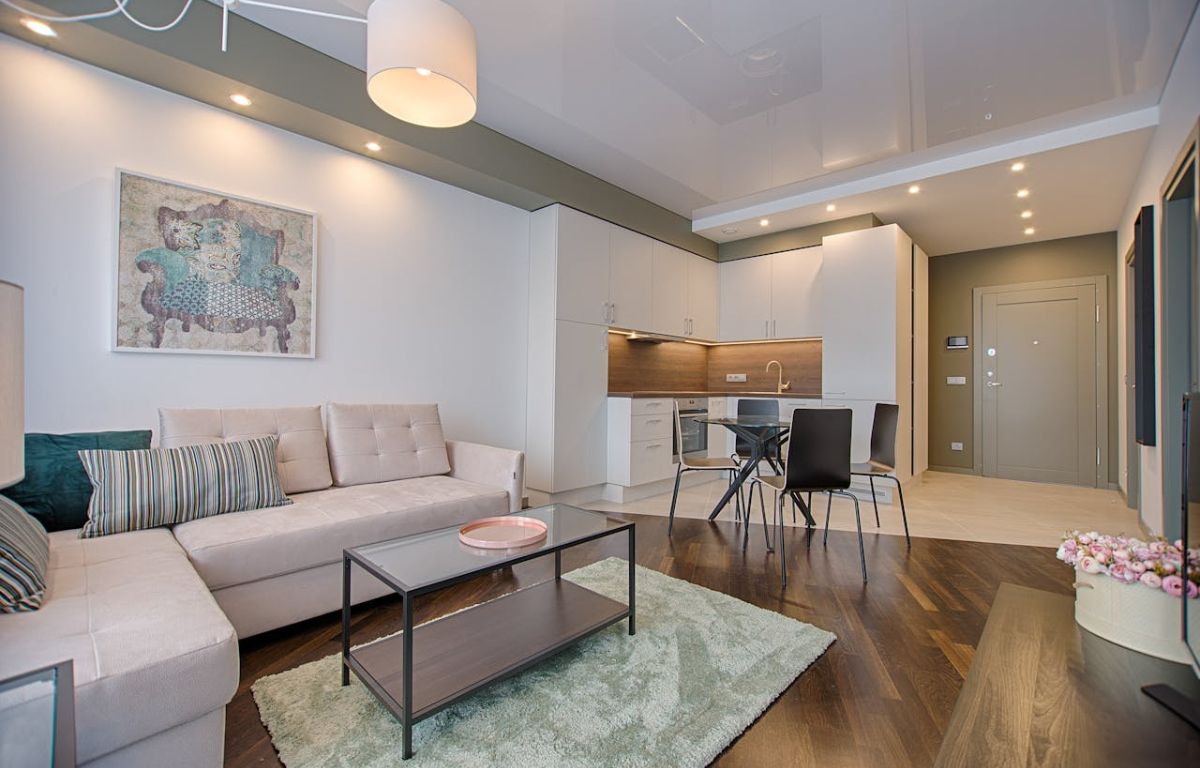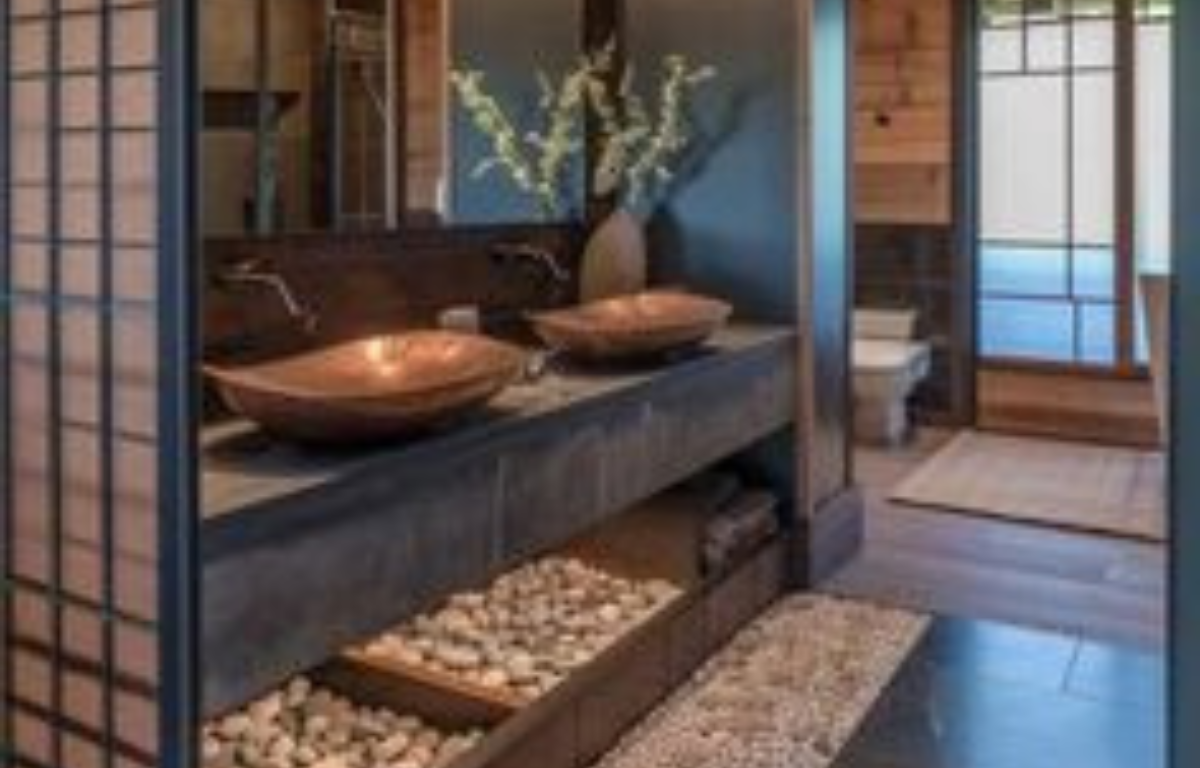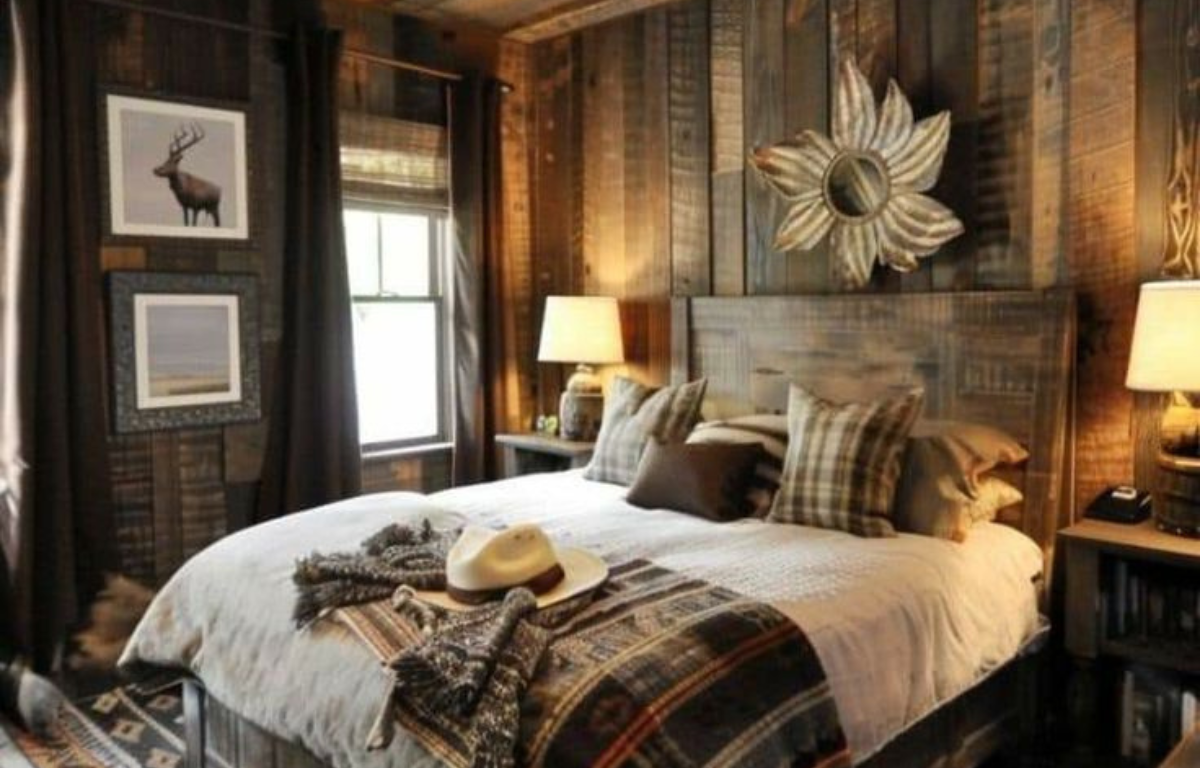Japandi design, a beautiful fusion of Japanese and Scandinavian aesthetics, creates a harmonious and tranquil living space. It combines the minimalist elegance of Japanese design with the cozy functionality of Scandinavian interiors, resulting in a style that is both serene and inviting. This guide will walk you through the key elements of designing a Japandi-inspired home, focusing on simplicity, natural materials, and a sense of calm.
1. Understanding Japandi: The Fusion of Two Philosophies
Japandi is more than just a trend; it’s a design philosophy that values simplicity, functionality, and natural beauty. It blends the Japanese concept of “wabi-sabi,” which celebrates imperfection and simplicity, with the Scandinavian emphasis on comfort and coziness.
- Wabi-Sabi: Embracing imperfections and natural aging.
- Hygge: Creating a cozy and comfortable atmosphere.
- Minimalism: Emphasizing simplicity and decluttering.
2. The Natural Palette: Earthy Tones and Subtle Accents
The color palette in a Japandi home is inspired by nature. Think earthy tones, soft neutrals, and subtle accents.
- Neutral Base: Whites, grays, and beiges create a serene backdrop.
- Warm Accents: Wood tones, terracotta, and muted greens add warmth.
- Limited Color: Avoid bright or overwhelming colors.
3. Natural Materials: Wood, Bamboo, and Linen
Natural materials are essential for creating a Japandi aesthetic. Focus on:
- Light Wood: Scandinavian influence with light oak, pine, or birch.
- Dark Wood: Japanese influence with darker woods like walnut or cedar as accents.
- Bamboo: Versatile and sustainable material for furniture and decor.
- Linen and Cotton: Natural textiles for bedding, curtains, and upholstery.
4. Minimalist Furniture: Functional and Streamlined
Japandi furniture is characterized by clean lines, functionality, and a minimalist approach.
- Low-Profile Furniture: Inspired by Japanese floor living.
- Simple Silhouettes: Avoid ornate or overly decorative pieces.
- Multifunctional Pieces: Maximize space with furniture that serves multiple purposes.
5. Decluttering: Embracing Open Space
A clutter-free environment is crucial for achieving a Japandi aesthetic.
- Storage Solutions: Invest in smart storage to keep items out of sight.
- Minimal Decor: Choose a few meaningful pieces rather than many small items.
- Open Space: Allow for ample open space to create a sense of calm.
6. Natural Light: Maximizing Sunlight
Natural light is essential for creating a bright and airy Japandi home.
- Large Windows: Allow for maximum sunlight.
- Sheer Curtains: Soften the light without blocking it.
- Strategic Mirror Placement: Reflect light to brighten the space.
7. Indoor Plants: Bringing Nature Indoors
Indoor plants add a touch of nature and purify the air in a Japandi home.
- Minimalist Planters: Choose simple, ceramic or wooden planters.
- Low-Maintenance Plants: Consider plants like snake plants, ferns, or bonsai.
- Strategic Placement: Place plants to enhance the natural feel.
8. Textural Elements: Adding Warmth and Depth
Textures add depth and warmth to a minimalist Japandi interior.
- Woven Textiles: Use natural fibers like wool, linen, and jute.
- Ceramic and Stone: Incorporate handmade pottery or stone decor.
- Natural Wood Grain: Showcase the natural patterns of wood.
9. Lighting: Soft and Warm Ambiance
Lighting plays a crucial role in creating a cozy Japandi atmosphere.
- Warm LED Bulbs: Avoid harsh, bright lights.
- Paper Lanterns: Inspired by Japanese design, they provide soft, diffused light.
- Floor and Table Lamps: Add layers of light at different heights.
10. Art and Decor: Intentional Simplicity
Art and decor in a Japandi home should be minimal and meaningful.
- Minimalist Art: Abstract prints or simple line drawings.
- Handmade Ceramics: Unique, artisanal pieces add character.
- Calligraphy or Ikebana: Traditional Japanese art forms.
11. Flooring: Natural and Unadorned
Flooring should be simple and natural, creating a seamless flow throughout the home.
- Hardwood Floors: Light or dark wood, depending on your preference.
- Bamboo Flooring: Sustainable and visually appealing.
- Minimalist Rugs: Choose rugs with simple patterns or natural fibers.
12. Kitchen Design: Functional and Streamlined
Japandi kitchens prioritize functionality and simplicity.
- Clean Lines: Minimalist cabinetry and countertops.
- Natural Wood Accents: Incorporate wood in shelving or countertops.
- Open Shelving: Display essential items rather than hiding them.
13. Bathroom Design: Spa-Like Serenity
Bathrooms should be serene and spa-like, reflecting the calming nature of Japandi design.
- Natural Stone: Use stone for countertops or tiles.
- Wooden Accents: Add warmth with wooden elements.
- Minimalist Fixtures: Choose simple, elegant fixtures.
14. Bedroom Design: Peaceful Retreat
Bedrooms should be peaceful retreats, promoting relaxation and rest.
- Low Platform Beds: Inspired by Japanese floor living.
- Linen Bedding: Natural, breathable fabrics.
- Minimalist Decor: Avoid clutter and distractions.
15. Outdoor Spaces: Extending the Serenity
Extend the Japandi aesthetic to outdoor spaces, creating a seamless transition between indoors and outdoors.
- Minimalist Gardens: Focus on simple, clean lines.
- Natural Materials: Use wood, stone, and bamboo in outdoor furniture.
- Zen Gardens: Incorporate elements of Japanese Zen gardens.
16. The Essence of Equilibrium: The Importance of Balance – Creating Harmony
Japandi design, at its core, is a symphony of balance, a delicate interplay between contrasting elements that harmonize to create a serene and inviting atmosphere. This equilibrium is achieved by thoughtfully juxtaposing light and dark, warm and cool tones, and simple and textural elements, resulting in a space that feels both grounded and ethereal.
17. The Beauty of Imperfection: Embracing Imperfection – Wabi-Sabi in Practice
In the realm of Japandi, the Japanese concept of “wabi-sabi” takes center stage, celebrating the inherent beauty of imperfection and the natural aging process. This philosophy encourages the selection of items that showcase character, patina, and the gentle marks of time, adding a layer of authenticity and soulful depth to the design.
18. The Ethos of Sustainability: Sustainable Choices – Eco-Friendly Design
Japandi design extends beyond mere aesthetics, embracing a profound respect for the environment. Prioritize sustainable materials and practices, reflecting the mindful and natural approach inherent in both Japanese and Scandinavian design philosophies. This commitment to eco-consciousness ensures that your home is not only beautiful but also responsible.
19. The Canvas of Individuality: Personalization – Adding Your Unique Touch
While Japandi design emphasizes simplicity and minimalism, it also recognizes the importance of personal expression. Don’t shy away from incorporating unique touches that reflect your individual style and preferences. These personal accents serve to infuse your home with a sense of identity and warmth, making it truly your own.
20. The Power of Subtraction: The Power of Simplicity – Less is More
The cornerstone of Japandi design is the principle of “less is more.” Focus on selecting high-quality, meaningful pieces rather than accumulating a multitude of unnecessary items. This approach fosters a sense of calm and uncluttered serenity, allowing the beauty of each element to shine.
21. The Symphony of Serenity: Sound and Ambiance – Creating a Tranquil Environment
Beyond the visual aspects, Japandi design also considers the auditory and atmospheric qualities of a space. Strive to create a tranquil environment by minimizing noise and incorporating elements that promote peace and serenity. This attention to sensory detail enhances the overall sense of calm and well-being.
22. The Art of Utility: Functional Art – Combining Beauty and Utility
In a Japandi home, decor is not merely ornamental but also functional. Choose pieces that seamlessly blend beauty and utility, reflecting the practical nature of both Japanese and Scandinavian design. These items serve a purpose while adding to the aesthetic appeal of your space.
23. The Warmth of Comfort: The Importance of Comfort – Hygge in Japandi
While rooted in Japanese minimalism, Japandi design also embraces the Scandinavian concept of “hygge,” which emphasizes coziness and comfort. Incorporate elements that create a warm and inviting atmosphere, making your home a sanctuary of relaxation and well-being.
24. The Seamless Flow: The Flow of Space – Creating Seamless Transitions
Design your home with a focus on creating a seamless flow between rooms and spaces. This thoughtful consideration of spatial transitions enhances the sense of openness and tranquility, fostering a harmonious living environment.
25. The Lifestyle of Mindfulness: Mindful Living – Japandi as a Lifestyle
Japandi design transcends mere aesthetics, evolving into a lifestyle that promotes mindfulness, simplicity, and a deep connection to nature. Embrace this philosophy as a holistic approach to living, creating a home that nurtures both your physical and spiritual well-being.
In conclusion
designing a Japandi-inspired home is an exercise in creating a sanctuary of serene simplicity. It’s a harmonious blend of two distinct yet complementary design philosophies, resulting in a space that is both visually stunning and deeply comforting. By embracing natural materials, a neutral color palette, and minimalist furniture, you cultivate an environment that fosters peace and tranquility.
Furthermore, the emphasis on decluttering, natural light, and indoor plants reinforces a connection to nature, while the incorporation of textural elements and soft lighting adds warmth and depth. The intentional selection of art and decor, coupled with the celebration of imperfection through wabi-sabi, imbues the home with a sense of authenticity and timelessness.
Ultimately, a Japandi home transcends mere aesthetics, evolving into a lifestyle that promotes mindfulness and a deep appreciation for simplicity. It’s about creating a space that not only reflects your personal style but also nurtures your well-being, providing a haven of calm in the midst of a bustling world. Embrace the journey of creating this harmonious blend of Japanese and Scandinavian design, and allow your home to become a testament to the beauty of simplicity and the serenity it brings.
